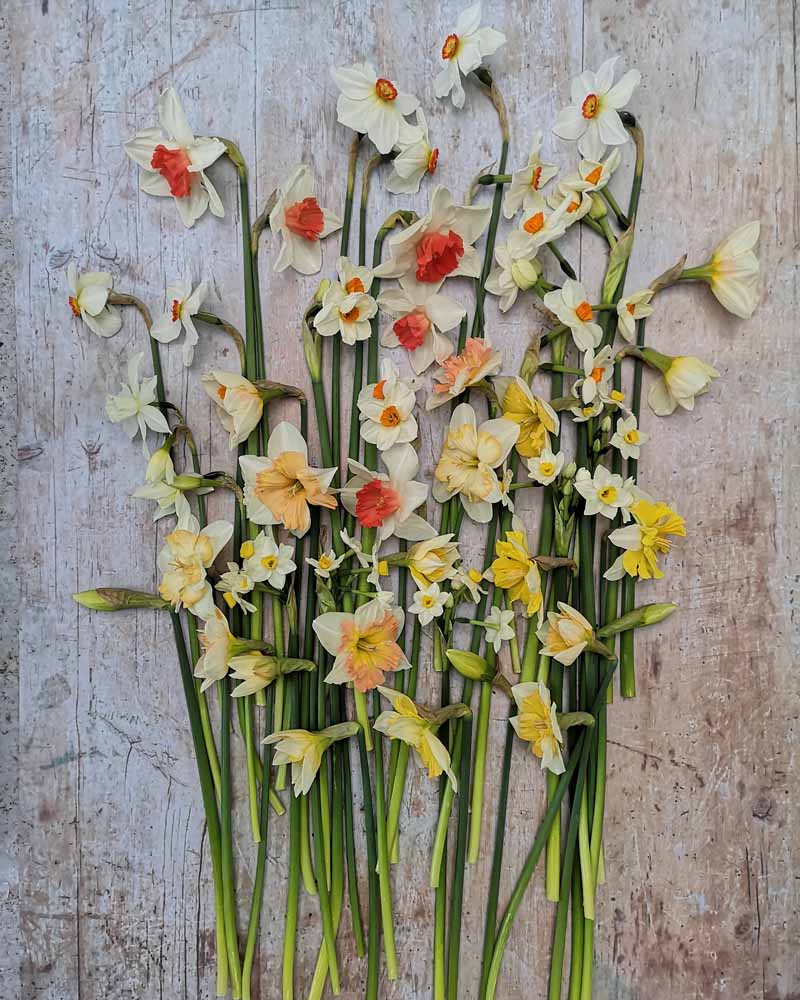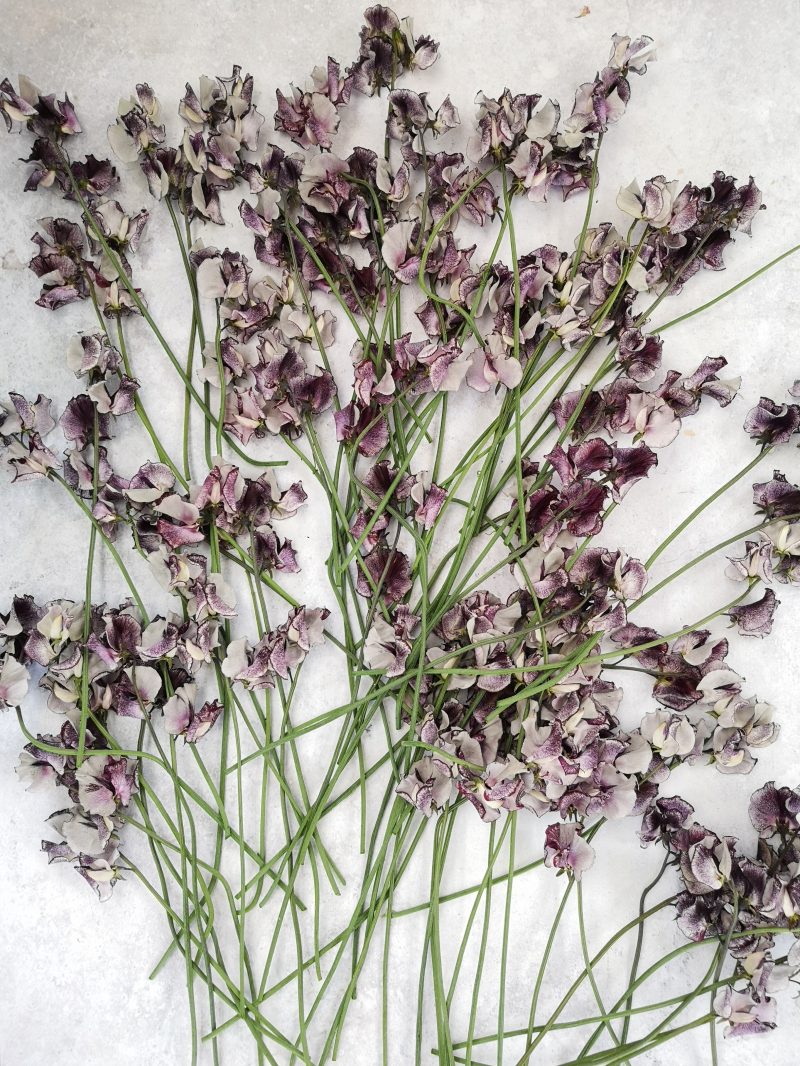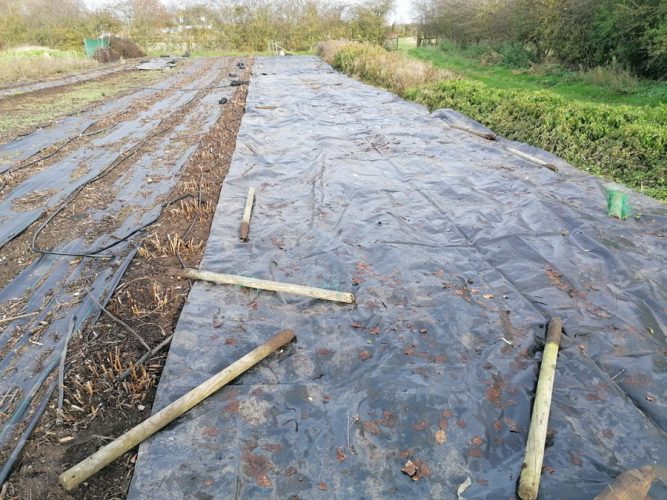After the rush and blur of Christmas and before the New Year begins, it’s a good time to stop and take stock of all that happened over the past year.

My review at the end of each year is of course always in flowers – I like to look back at both the triumphs and the failures. I must confess it is incredible how I struggle to remember it all by the time we get to December. Fortunately taking pictures most days is a great way of record keeping, so I thought I would share a few of my favourite pictures through the season and reflect on what I could tweak to have more triumphs and less failures in 2020. Of course that is with a big caveat – all my knowledge and experience can be scuppered by the increasing challenges of our weather. How to sustain a flower farm with prolonged periods of wet or dry weather putting a lot of stress on the plants is something we are all having to adapt to fast to stay in business. Sustainability will be my keyword for 2020 and ways to keep both myself and Green and Gorgeous thriving.

Our Spring got off to a good start with all of our flowering bulbs doing well just in time for our busiest Mother’s Day ever, which was a wonderful way to open our Farm Gate Sales for the season.

I was really impressed by the outdoor tulips which were just as good as the polytunnel grown varieties. I think planting them in raised beds next to the tunnel meant they benefited from the tunnel’s radiated warmth giving just as good stem length but a longer flowering period. I couldn’t resist planting more in the Autumn so there will be a Tulip class looking at both growing and arranging to make the most of the harvest in April.

The mild Winter and dry Spring meant the plants were stressed and succumbed to the worst infestation of black fly I had ever seen. Flowering shrubs like Viburnum opulus were unusable and the only thing which would remedy it was rain. Thanks to our irrigation system we could keep everything else going and with a decent enough stem length to cut.
The rain finally came and by the bucket load, flowers were picked in full waterproofs and dried off in the greenhouse.

The Sweet Peas flourished in the tunnel, I always find early flowering indoor varieties so much more reliable and longer in flower than the Spencer types which seem to come in to flower just as we get a hot, dry spell. I am considering not growing them next year but it is hard to let go of beauties like this striped variety called Nimbus. I think a position that only receives sun for half the day would make a big difference.

One of the most triumphant flowers of 2019 was the Foxglove, both biennial and the summer flowering Camelot series. Not only were they premium quality but I sold or arranged almost every stem. I can only class something as a success if it ticks both boxes.

I was so excited to see our second rose tunnel come into flower with lots of new varieties to trial buy (not pick – hands off until 2020!). We will be celebrating with a Rose class in June, as part of our Floral Favourites this year.

Perennials were a big subject this year with an ever-increasing range thanks to visits to specialist plant fairs and plantswomen like Jane Edmonds. They are one of my strategies for creating a resilient and sustainable business, as they are generally more tolerant to weather extremes and of course as I celebrate my 50th birthday next week a little easier to look after and basically less knackering! They will also keep me interested as there seems to be a never-ending list of varieties to discover. If you are interested in learning more I will be running a Garden Masterclass through Gardens Illustrated in July.

Dahlias were good this year and plentiful with 500 in the ground and over 50 varieties. They were at their best for a magazine shoot with Clive Nichols and then an early frost at the beginning of September put a bit of a downer on things. Flower farming really is about the highs and lows (Celsius!) with some hasty covering not really being up to the job.

However, after some brutal cutting back they returned with a final flourish in the last days of summer.

To round the season off the Chrysanthemums really did us proud this year, by having them all in the tunnels even the early outdoor varieties they stayed in good condition and allowed me to continue arranging for events right through November. Each year I add to my collection carefully saving the ones I have so I can generate new plants from basal cutting in the early Spring.

All of this beauty and general flower hustle and bustle has helped me through a tough year on the personal front with much bereavement. Thanks to the flowers and my wonderful team and customers I felt enormously supported through it all. I put everything I have into caring for our rather large garden/flower farm and in times of need I know I can step into it and feel that care returned to me.
Best wishes for 2020 and another decade of Great British flowers,
Rachel
















